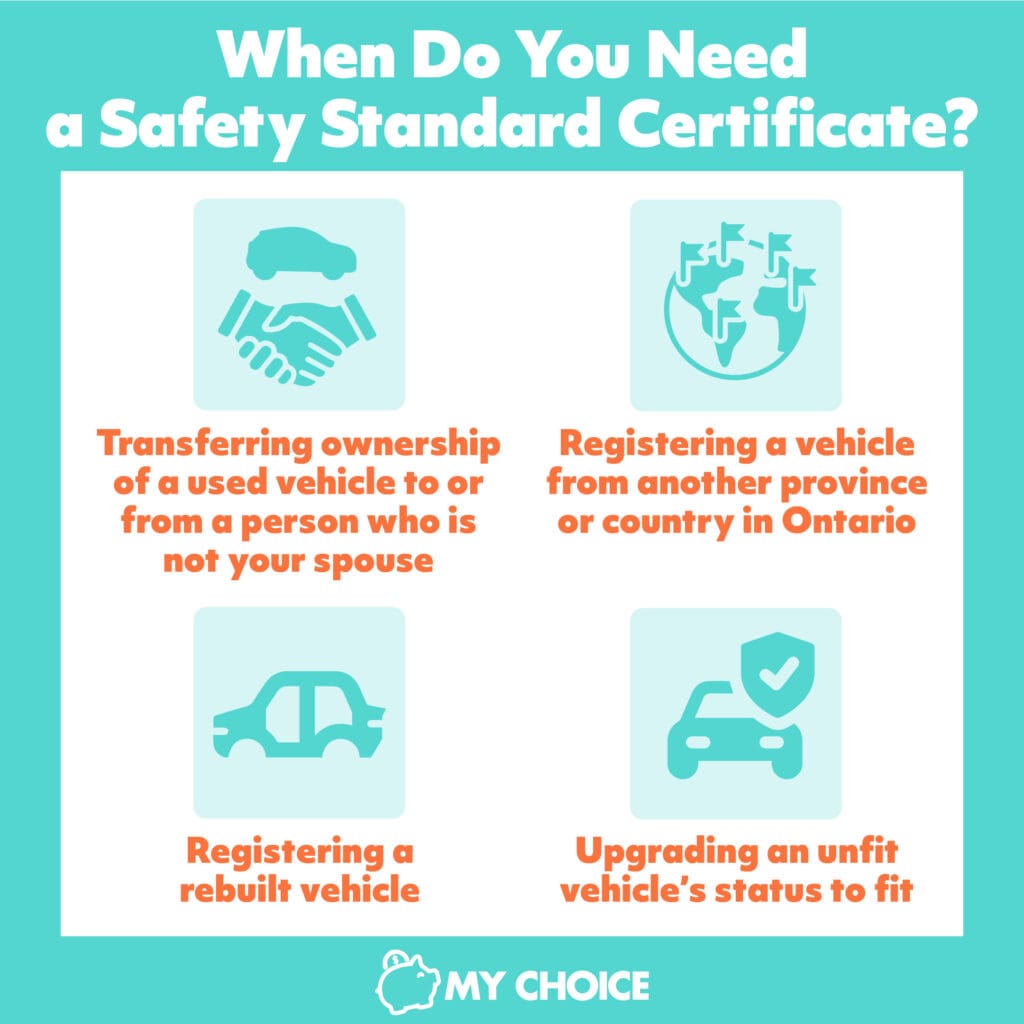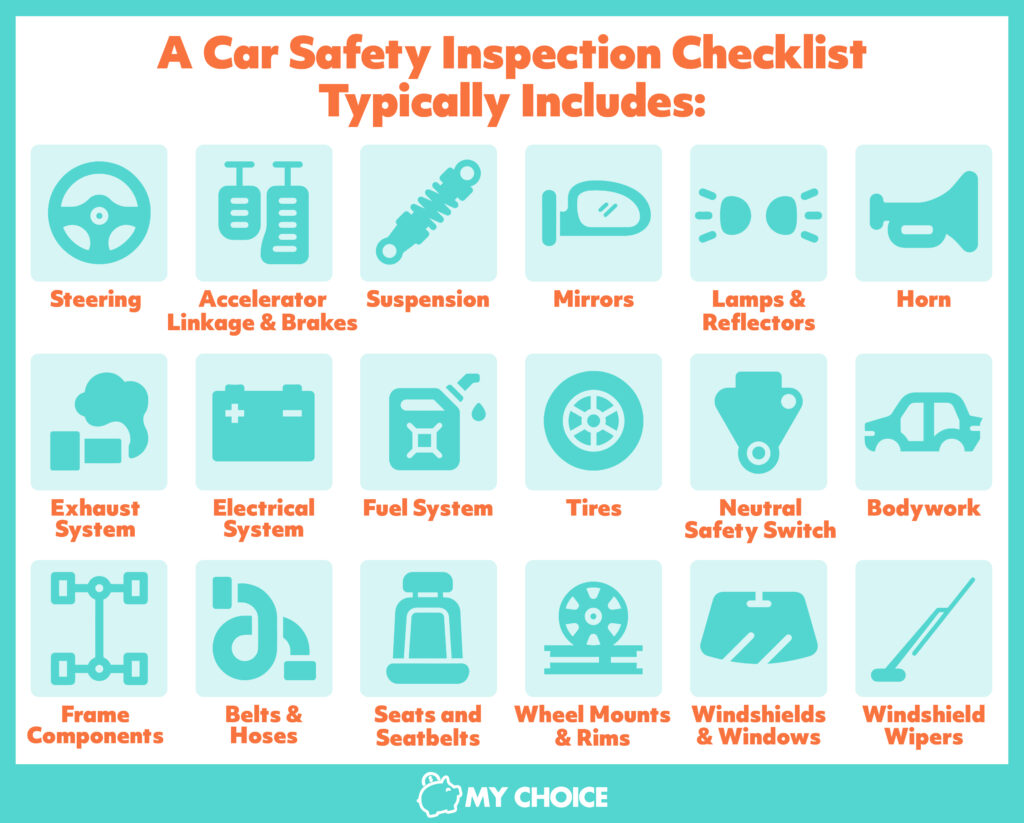
Before putting a license plate on a car in Ontario, you need a safety standards certificate. A safety standards certificate ensures that your vehicle passes the minimum safety standards in Ontario and is fit to drive.
Why do you need a safety standards certificate, and where can you get one? In this guide, we go into detail about the ins and outs of passing a safety inspection and acquiring a safety standards certificate.
What is a Safety Standard Certificate?
A safety standards certificate is a document given to a car that passes a safety inspection in an accredited garage. This certificate only guarantees that the vehicle in question meets the minimum safety requirements to be roadworthy in Ontario. Your car needs to have a safety standards certificate before you can legally put a license plate on it.
This certificate does not ensure that the car is in good condition or act as a warranty. A safety standards certificate is only valid for 36 days after it is issued.
Why Do I Need a Safety Standard Certificate?
You need a safety standard certificate to put license plates on your car legally. You only need this certificate if you plan to register a vehicle in Ontario. You don’t need a safety standards certificate to buy or register a used vehicle under your name, though you will need to get one before you can drive it.
If you’re making a private sale of a used vehicle, having a safety standards certificate already issued to your car will make it more attractive to potential buyers than if it doesn’t have one.
Where Can I Get a Safety Check for My Car?
Auto garages licensed by the Ministry of Transportation of Ontario (MTO) can perform a safety check for your car and issue a safety standards certificate, eligible garages will have signage labelled with “Motor Vehicle Inspection Station.”
When Do I Need a Safety Standard Certificate?
You need a safety standard certificate and inspection in four situations:
- Transferring ownership of a used vehicle to or from a person who is not your spouse
- Registering a vehicle from another province or country in Ontario
- Registering a rebuilt vehicle
- Upgrading an unfit vehicle’s status to fit

What Does a Safety Inspection Involve?
A safety inspection involves thoroughly checking a car’s systems and moving parts. A car safety inspection checklist typically includes the following areas in your car:
- Accelerator linkage
- Brakes
- Steering
- Suspension
- Mirrors
- Exhaust system
- Electrical system
- Fuel system
- Tires
- Lamps and reflectors
- Neutral safety switch
- Horn
- Bodywork
- Frame components
- Belts and hoses
- Coupling devices
- Seats and seatbelts
- Wheel mounts and rims
- Windshields and windows
- Windshield wipers
In addition to these areas, your car must also pass a road test to qualify for a safety standards certificate. If your vehicle needs repairs, you will not be able to get a safety standards certificate until the necessary repairs have been done. You can find a copy of the Passenger/Light-Duty Vehicle Inspection Standard online.

How Can I Prepare for a Safety Inspection?
You can prepare for a safety inspection by ensuring your vehicle is in good working condition. Before you shell out the cash to acquire a safety standards certificate, you may want to give yourself the best chance of passing a car safety inspection.
Here are a few things that you can repair or replace before a safety inspection to give your car the best chance of passing:
Brakes
You can’t avoid your brakes wearing down over time, but avoiding worn-out brakes can keep you from a bad accident. If your car doesn’t seem to be as responsive when braking, it may be a sign that you need to get them replaced.
Check your brake pads before going in for a safety inspection. If the brake-shoe lining is less than 1.7 millimetres, you will need to replace them before your car passes an inspection.
Tires
Driving on bald tires is incredibly dangerous, especially if you’re driving at night or on an icy highway. Without proper treads and proper tread depth, your car won’t have a good grip on the road, which can put you and other drivers in danger.
Whether you’re using the tires that came with your car or switched them out for a new set, you should check if the tread depth is at least 2mm. If your tread depth is less than 2mm, you must replace your tires before passing an inspection.
Suspension
Your car’s suspension is built to give you a smooth ride while keeping your car from bouncing all over the road. You might need to check your suspension if you notice that you’re bouncing more than you think is comfortable.
According to the safety inspection criteria, your suspension should be in good condition and not too low to the ground, worn-out suspension ball joints or springs can cause your car to fail a safety inspection. If the height difference of your vehicle alignment is 25mm or more, your suspension will need to be repaired or replaced before you can take a safety inspection.
Exhaust
Your exhaust system carries away the harmful waste products from the internal combustion engine and deposits them safely outside your car. If your exhaust leaks, it can filter carbon monoxide fumes into your car, leading to injury or death.
Make sure your exhaust system is sealed tight and snugly fit to pass an inspection. You will need to get your exhaust fixed if it’s found to be leaky or compromised.
Steering
Your vehicle’s steering is made up of hundreds of interconnected parts that can wear out over time. While all you can see is the steering wheel, these parts work in harmony to ensure your car turns when you want it to and by how much you need it to.
If your car is listing to either side when your steering wheel is straight on, you might need to check your steering system before passing a safety inspection.
Lights
Your car’s lights are not only for your own visibility but also to communicate your position and intention with other drivers on the road. If one of your lights is broken or weak, driving on a highway or at night can be more dangerous.
Ontario Motor Vehicle Inspection Stations check your lights for visibility and function so make sure you have bright and working headlights, brake lights, and turn signals.
Bottom Line
Passing a car safety inspection in Ontario from a licensed auto shop will award your car with a safety standards certificate, this certificate is a requirement before you can put license plates on your car. While you don’t need a safety standards certificate to buy, sell, or register a car in Ontario, you will need one before you can legally drive it around.
Any licensed Motor Vehicle Inspection Station can perform a safety inspection on your car and issue a safety standards certificate which will be valid for 36 days and you can expect to pay anywhere between $60 and $150, depending on the garage you go to. To pass a safety inspection, you must at least ensure your brakes, suspension, steering, exhaust, tires, and lights are in good working condition.








